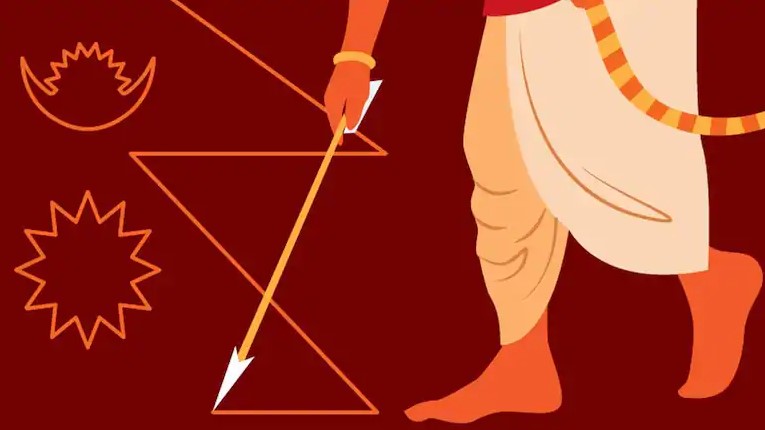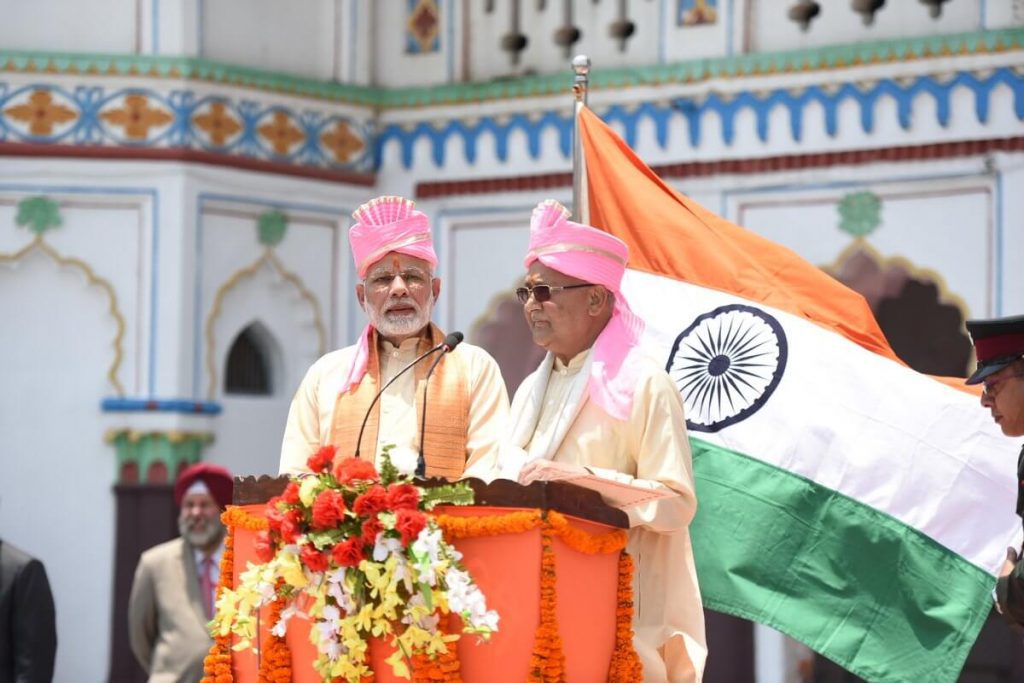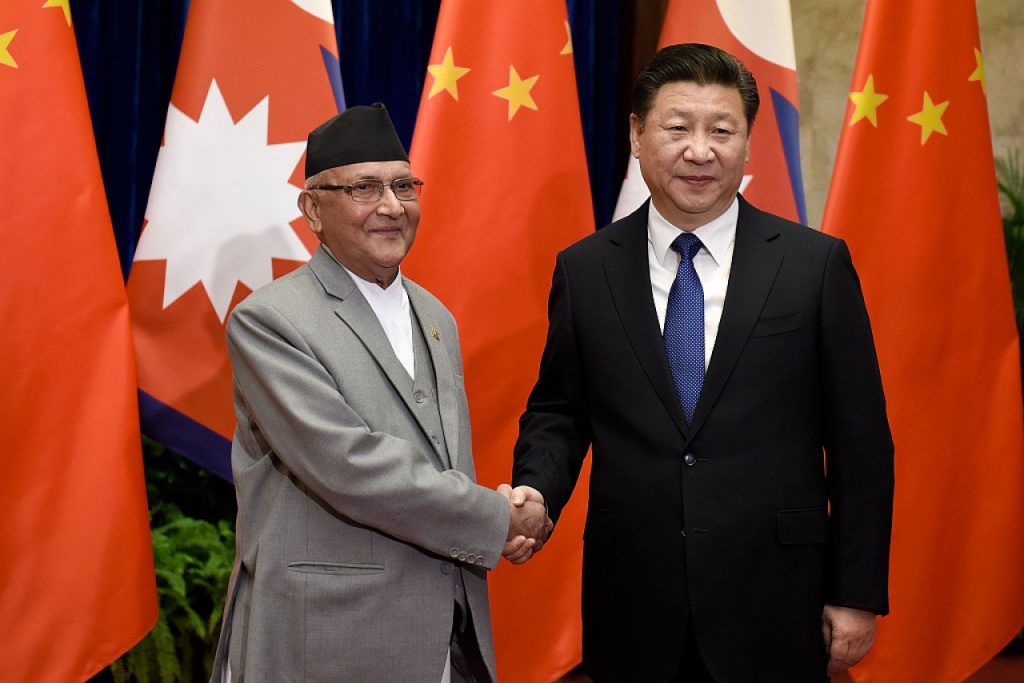
In recent times, the political changes taking place around the world have created quite a hullabaloo, as the pandemic has become a tool in the hands of governments all over. It is also evident that many of these instances involve one single country, namely China. Be it with the United States of America, United Kingdom and even Taiwan, China has been constantly trying to provoke and perturb leading political powers and developing countries which serve its purpose.
Now, China has shifted its focus on India by way of Nepal and has ruffled a lot of feathers in the process. Nepal’s relations with its northern neighbour China continue to flourish amid border tensions with India. Once considered a buffer state between India and China, Nepal, led by Prime Minister KP Sharma Oli, has clearly shown the side’s inclination with Beijing. Instigated by China, Nepal’s action is provocative, not limited to change on just one map. Presenting a new map is merely symbolic, Kathmandu has gone ahead with the deployment of the Nepalese army on its border with India.
Beginning of the Issue
The whole controversy started in May 2020 when Nepal laid claim to an area known as Kalapani as a part of their country’s territory. It happened when the new 80 km-long road in the Himalayas, connecting to the border with China, at Lipulekh pass was inaugurated. It followed by protests by the Nepali government, arguing that the road encroaches upon the territory of Nepal and such a decision could not be taken without diplomatic discussion between the two countries. And while India was open and indeed welcoming the idea for a peaceful resolution of the issue, Nepal responded in an unprecedented manner.
Nepal’s government led by Prime Minister K. P. Sharma Oli, deployed police forces to the region, summoned the Indian ambassador in Kathmandu, in addition to commencing the procedure to officially take over the territory in question. It thus brought out a new map of Nepal which included three regions of Uttarakhand, namely, Kalapani, Lipulekh and Limpiyadhura, as part of its own territory, strategically located close to the India-Nepal-China tri-juncture. This further worsened the tensions between the two countries with India wanting to discuss the issue in a peaceful manner. However, this has largely been disregarded by the Nepali government.
The area in question has been a part of Indian territory for more than 60 years and has several infrastructural buildings constructed in the area as well. Thus, the new road cannot be construed to be a sudden change in territorial claims on the Indian government’s part. In fact, the India-China agreement of 2015 also recognized India’s sovereignty in the area. However, the Nepalese authorities have brought up the Sugauli Treaty of 1815, between Nepal and British India, according to which the Mahakali River flowing through the Kalapani area was understood to be the boundary between the two countries. It also claims that a map showing the disputed territory as its own has been circulating in the region till the 1950s.
Other Recent Instances of Conflict
In fact, this is not a standalone issue, for Nepal has continued levelling accusations and making wild claims in the past few weeks. Prime Minister Oli, facing a political crisis at home and a threat to his position, made wild accusations against the Indian authorities of planning and plotting his removal from the post of Prime Minister of Nepal. He also said that Indian people entering Nepal were spreading the deadly virus of Covid-19 amongst the Nepalese population and is being considered more lethal than Chinese or even Italian.

Nepal also amended its Citizenship Law, according to which any Indian girl marrying a Nepalese citizen would have to wait for a period of seven years in order to get citizenship of Nepal. The move was seen as rather dubious, for India – while having such a condition for other countries to get citizenship of India – has no such requirement for the people of Nepal. In the most recent move, Prime Minister Oli claimed that the birthplace of Lord Ram, Ayodhya, was in Nepal and not India, angering the Indian population as well as the Nepalese population and firing up another controversy.
India-Nepal Relations in the Past
All these instances come as a shock to India, considering the cordial relations the two countries enjoyed in the past. The excellent bilateral relations between India and Nepal in the past can be seen from that the countries share an open border, not requiring any visa to travel to and fro. Indeed, the phrase ‘Roti-Beti ka Rishta’ has been used to describe the relations between the two countries. India is one of Nepal’s largest trade and investment partners and provides many services like banking, insurance and tourism etc.

To improve connectivity between the two, railway lines and bridges have been built as well. After the massive earthquake in Nepal in 2015, India had provided the neighbouring country with massive humanitarian assistance to rebuild and grow again.
In the defence sector, India provides modern ammunition and equipment to the Nepalese Army and even the Gorkha Regiment of the Indian Army is partly recruited from certain districts of Nepal. From 2011 onwards, the armies of both countries have been participating in the joint military exercise Surya Kiran. India and Nepal are also a part of several multilateral forums like BBIN, BIMSTEC, NAM and SAARC.
Keeping all these points in mind, the question remains – Why is Nepal putting all these benefits on the line and acting so rashly?
Chinese Involvement
The answer involves many political facets and one single country – China. While India-Nepal relations have been mostly rosy, there have been instances which created fissures and cracks between the two. Nepal has always been critical of Indian intervention in the neighbouring country’s domestic affairs. Case in point, when the new Constitution of Nepal was being drawn, the Indian government expressed concern over the fact that Indian-origin Nepalese, known as Madhesi, were not given much importance. This had led to protest by the Madhesi communities and even some casualties. Now, within the country, Prime Minister Oli is facing harsh criticism from his opposition for his poor handling of the economy as well as the current pandemic and his resignation as the leader of the country has been demanded a number of times.
Seeing this as an opportunity to capitalise upon, China started intervening in the governance of the country with a two-fold purpose; to exert influence over Prime Minister Oli by means of economic help and well as attack India indirectly and make it yield to China.

Thus, China assisted PM Oli in retaining his seat when Chinese Ambassador to Nepal Hou Yanqi met with the top party leaders of Nepal and convinced them to drop the signature campaign which they had started, maintaining peace and cooperation within the government. In addition, China has been aiding Nepal financially as well. Ambassador Hou was reported as saying to the newspaper Rising Nepal that in 2019, the trade volume between China and Nepal reached 1.5 billion dollars. The tourism between the two countries also expanded exponentially and China has aided in 25 post-earthquake reconstruction projects as well. To increase its impact, the Chinese government has also started a range of cultural and educational programs for the people of Nepal.
It also came to light recently through a report in Global Watch Analysis that Prime Minister of Nepal K P Sharma Oli’s personal wealth had seen an increase in recent years which was kept in a bank in Geneva. It was also suggested by the author of the report, Roland Jacquard, that the money was acquired during business dealings with China.
Effects on India
China had invested in Nepal and manipulated its corrupt leaders with the belligerent goal of cornering India and making it politically weaker. Nepal has been a close ally of India since decades, regardless of certain criticized moves by the latter in the former’s territory. Now that China is facing criticism from all corners for the spread of Covid-19 and the threat of a war on the brink, it needs as many allies as possible. It has thus used underhanded moves to influence the Nepalese government to take rather hurried steps and make controversial statements which would inevitably damage the cordial relations hosted by the two countries since ages.
Considering that Nepal shares a 1,751 km open border with India, China may very well use PM Oli as a puppet to instigate border violence and hostility between the neighbouring countries. By turning an age-old ally into an unfamiliar enemy, China hopes to pose a new threat and further aggravate the situation for India.
India is developing at a fast pace and progressing economically as well. It is also posing a threat to China in South-East Asia as such. By pulling Nepal to its side China is forcing India to review its defence policies with a stern and firm perspective. Nepal, led by PM Oli is also playing into China’s hands due to the significant financial aid to it as well as the personal gains being made by the political leaders, it would seem.
Conclusion
As China brainwashes Nepal in an attempt to corner India, various facets come into play. It is not merely a political issue, for it involves strategic security and defence tactics as well. Considering the recent border tussle with China, India would have to take its steps carefully and with a cool head. The Indian government has not taken any reckless and rash decision yet despite being provoked several times but only time will tell what direction this dispute would take and whether Nepal or rather China, would employ increasingly aggressive techniques or not.
While it is hard to ignore the threat being posed to the security and defence of India, it must also not be forgotten that cheap tactics will only help China’s case so far. With countries all around the world blocking trade with China and restricting communication as well, it would only be a matter of time before it has to suffer the retributive consequences of its actions. India too has allies backing it and would not be afraid of making use of the tricks its sleeve if push came to shove.
India’s integrity and sovereignty are supreme for us and no one can stop us from defending it. Nobody should have an iota of doubt about it. India wants peace. But on provocation, India will give a befitting reply.”
Narendra Modi, Prime Minister of India
Editor’s Note
China’s growing presence in Nepal is a reality that India cannot do anything about. China has been acting very smartly for almost a decade now. Just by using their brains, they can drag a lot of countries into their fist and target India for the future. As China’s policy towards Nepal has shown, they are pretty much able to manipulate Nepal but Nepal cannot turn their back from India because Nepal gets the highest remittance from India and thousands of Nepali men are recruited in the Gorkha Regiment and any wrong step could risk the job of these men. China’s presence makes no sense. Instead, India should provide an alternative narrative for India-Nepal relations, which takes into account old people-to-people ties and cultural ties. India should listen carefully to what Nepal’s new generation is saying and Kathmandu should also take into account the changing aspirations of ‘New India’. Relations between Nepal and India, between the two neighbours, are also important to abandon third-party irregularity.